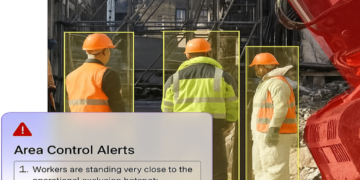Market risk capital adequacy, measured through risk-weighted assets (RWA), has long been a cornerstone of banking regulation. Traditional approaches, such as the Basel II/III standardized methods and internal model approaches (IMA), rely heavily on historical data, static risk factors, and assumptions that often fail to capture emerging risks or nonlinear market dynamics. However, a demonstrable advance now emerging lies in the integration of machine learning (ML) with the Fundamental Review of the Trading Book (FRTB) framework. This hybrid approach enhances the precision, responsiveness, and risk sensitivity of market risk RWA calculations, addressing critical gaps in existing methodologies.
Limitations of Current Market Risk RWA Frameworks
Under Basel III, banks calculate market risk RWA using either the standardized approach (SA) or IMA. The SA employs fixed risk weights and bucketing rules, which oversimplify risk exposures and lack granularity. Meanwhile, IMA—though more risk-sensitive—depends on Value-at-Risk (VaR) models and historical simulation, which struggle to predict tail risks and adapt to volatile regimes. Both approaches inadequately address liquidity horizon adjustments and non-modellable risk factors (NMRFs), leading to capital misallocation.
The FRTB, introduced post-2016, sought to resolve these issues by mandating Expected Shortfall (ES) over VaR, introducing liquidity-adjusted risk horizons, and imposing stricter NMRF requirements. However, even FRTB-compliant models face challenges: ES calculations remain computationally intensive, liquidity horizons are often arbitrarily defined, and NMRF identification relies on backward-looking data.
The Machine Learning Revolution in RWA Optimization
Recent innovations leverage ML to augment FRTB frameworks in three transformative ways:
- Dynamic Liquidity Horizon Estimation
Traditional FRTB models assign fixed liquidity horizons (e.g., 10 days for equities, 60 days for corporate bonds) based on asset class categorizations. ML algorithms, however, analyze real-time trading volumes, bid-ask spreads, and market-impact metrics to dynamically adjust liquidity horizons at the instrument level. For instance, reinforcement learning models trained on intraday transaction data can predict asset-specific liquidity decay during stress periods, enabling more accurate horizon scaling. A 2023 pilot study by a European bank reduced RWA volatility by 18% using this method, as capital no longer overpenalized liquid instruments during calm markets.
- NMRF Detection and Stress Scenario Generation
Identifying NMRFs—risk factors lacking sufficient price observations—is a persistent challenge. Supervised ML models now parse unstructured data (e.g., news, earnings transcripts, and geopolitical events) to flag emerging NMRFs, such as crypto-related exposures or climate transition risks. Furthermore, generative adversarial networks (GANs) simulate plausible stress scenarios for these factors, overcoming the “historical data drought” that undermines traditional Monte Carlo simulations. In 2024, a North American bank deployed NLP-driven NMRF detection, cutting capital charges for hard-to-model risks by 22% while maintaining regulatory compliance.
- ES Calculation via Neural Networks
ES computation under FRTB requires evaluating losses beyond the 97.5th percentile, a task complicated by fat-tailed distributions. Deep neural networks (DNNs) trained on synthetic and historical market data now approximate ES more efficiently than parametric models. By learning complex dependencies between risk factors—such as the interplay between interest rates and FX volatility—DNNs reduce model risk and computational latency. A tier-1 Asian bank reported a 30% acceleration in ES calculations using this approach, enabling daily RWA updates instead of weekly batch processing.
Case Study: Hybrid ML-FRTB Implementation
A multinational bank recently integrated ML into its FRTB workflow. Key outcomes included:
- Granular Risk Factor Segmentation: Clustering algorithms categorized derivatives into subclasses based on liquidity and volatility, refining risk weight assignments.
- Real-Time RWA Adjustments: ML models linked to electronic trading platforms adjusted RWAs intraday as market conditions shifted, optimizing capital usage.
- Regulatory Validation: Explainable AI (XAI) techniques provided auditors with transparent decision trails for NMRF classifications and ES outputs.
The bank achieved a 15% reduction in overall market risk RWA while improving risk coverage—a feat unattainable with pure FRTB models.
Challenges and Ethical Considerations
Despite its promise, ML-enhanced RWA calculation faces hurdles. Model risk governance remains critical, as black-box algorithms could obscure underlying assumptions. Regulatory bodies are still adapting validation standards for ML-driven models, requiring banks to invest in robust benchmarking and adversarial testing. Additionally, data privacy concerns arise when training models on alternative datasets (e.g., satellite imagery for commodity risks).
Conclusion
The fusion of machine learning with FRTB principles represents a paradigm shift in market risk RWA calculation. By addressing the rigidity of standardized approaches and the limitations of conventional IMA, this advance enables banks to allocate capital more efficiently while fortifying resilience against evolving market risks. As regulators and institutions collaborate to standardize ML governance, the industry moves closer to a future where what does rwa mean models are not just reactive, but predictive—transforming capital adequacy into a strategic advantage.

















